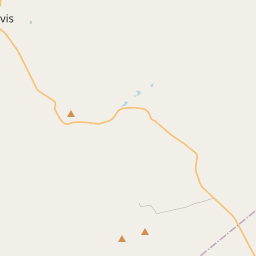Leoncita Springs
Historical marker location:






First known to history when Juan Dominguez de Mendoza camped here in 1684. Stage stand on the San Antonio to El Paso route through Musquiz Cañon 1857-1883. A camel train commanded by Lieut. W.H. Echols camped here in 1859.
Erected by the State of Texas 1936
As one of the most visible programs of the Texas Historical Commission (THC), historical markers commemorate diverse topics in Texas history, including: the history and architecture of houses, commercial and public buildings, religious congregations, and military sites; events that changed the course of local and state history; and individuals who have made lasting contributions to the state, community organizations, and businesses.
The state flower of Texas is the bluebonnet. The flower blooms in the spring and is a common sight along the highways and in fields throughout the state.
The modern history of Brewster County began in the mid-19th century when it was part of the larger Presidio County. It was named after Henry Percy Brewster, a secretary of war for the Republic of Texas. After the Civil War, the county experienced an influx of settlers, primarily ranchers, who took advantage of the rich grasslands and water sources in the area. Cattlemen such as Alta Adele Koch, known as the "Cattle Queen of Texas," played a significant role in shaping the county's economy.
The discovery of silver in the nearby Chinati Mountains in the late 19th century led to a mining boom in Brewster County. The town of Terlingua became a center of mining activity, attracting thousands of prospectors seeking fortune. However, the silver boom was short-lived, and by the early 20th century, the mines had closed, causing a decline in population and economic activity.
Brewster County's landscape and wildlife also played a role in its history. The establishment of Big Bend National Park in 1944 helped to conserve the region's natural beauty and attract tourists. Today, Brewster County is known for its stunning vistas, outdoor recreational opportunities, and a thriving art and cultural scene, making it a popular destination for visitors from around the world.
Brewster County Timeline
This timeline provides a concise overview of the key events in the history of Brewster County, Texas.
- 1887: Brewster County is established and named after Henry Percy Brewster, a Secretary of War for the Republic of Texas.
- 1889: Alpine, the county seat, is founded as a water stop for the Galveston, Harrisburg and San Antonio Railway.
- 1900: The completion of the Southern Pacific transcontinental railroad brings growth and prosperity to the county.
- 1921: Big Bend National Park is established, including a large portion of Brewster County.
- 1933-1938: The Civilian Conservation Corps (CCC) establishes numerous camps in the area, contributing to infrastructure development and conservation efforts.
- 1943: Construction begins on the Black Gap Wildlife Management Area, a renowned wildlife conservation and research site.
- 1998: The Terlingua ghost town is designated as a Recorded Texas Historic Landmark.
- 2007: The US-Mexico border fence is constructed through parts of Brewster County, impacting local communities.